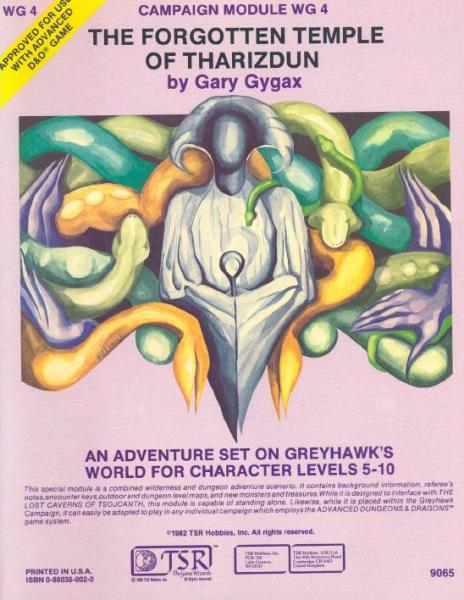
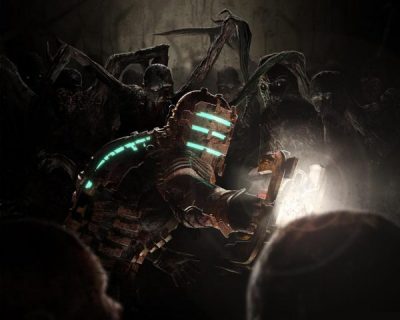
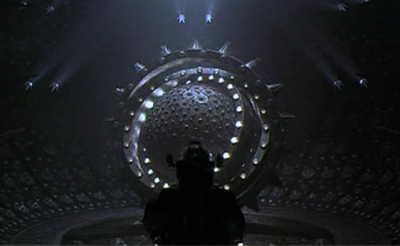
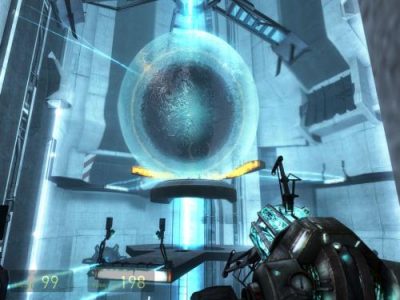

Alright, some people might be wondering, what is this all about?
Some other people might be thinking “Oh yeah, this is awesome!” Continue reading “A Return to the Temple of Tharizdun”
Yora's site for Sword & Sorcery RPGs





Alright, some people might be wondering, what is this all about?
Some other people might be thinking “Oh yeah, this is awesome!” Continue reading “A Return to the Temple of Tharizdun”
I am always very strongly influenced by sights and sounds and music always helps me a lot at focusing on a mood and aesthetic when working on my worldbuilding. I got a big collection of fantasy and sci-fi soundtracks from movies and videogames, and these are the ones I like the most for getting into the right mindset when writing for the Old World.
The Old World is a world that is intended to evoke an atmosphere of mystery and wonder, but at the same time be relatively easily accessible with no need for long exposition. A good way to do this is by using familiar things that the audience recognizes as a shortcut around unelegant infodumps. Possibly the best example of this method is Star Wars, especially the first movie. Everything you need to know you learn in the first two or three minutes with just a few words from C-3PO. The Rebels are running away in a cool looking ship with very big engines, the Empire pursues them with a ship that is just totally fucking humongous! Then the door explodes and through it comes a hord of guys in skeleton armor shoting everyone. And then this guy in black armor, a black cloak, and a black skull mask follows behind them. And he is accompanied by officers wearing Nazi uniforms. Barely any words have been said yet but you already know everything you need to know about this conflict.
I am using a similar approach to presenting the wildlife in the Old World. It’s different from the animals found in Europe and Northern America, but mostly these are animals that are very similar to what we are already familiar with on Earth. For that reason I am drawing heavily on prehistoric animals like dinosaurs and early mammals. They are very much like normal animals, but they also don’t look like anything we’re used to, which matches my overall approach to the worldbuilding for the Old World. Distinctively different, but not too alien.
In addition to being a convenient shortcut to create a plausible and easy to grasp ecology, basing these creatures on real animals also helps with establishing a clear difference between natural beasts and supernatual monsters. An important element of making things both fascinating and unsettling is a good amount of uncertainty what you’re actually dealing with. In settings in which the natural world is mostly identical to life on Earth, it is very easy for the audience to tell the difference between what is normal and what is alien. When you populate a world primarily with fictional creatures, this becomes a lot more difficult. Is something supposed to be threatening or not? The audience has to understand that to get into the thoughts of the characters who are dealing with it. By keeping the natural beasts of the Old World to animals that did exist or could very well have existed on Earth in the past, I am hoping to make this distinction more clear and easy to grasp.
There are no stats for any roleplaying game attached to them at this point, but to help getting an impression about their strength, each is given a threat class ranging from 0 to 6.

The arag is a predator about the size of a large dog. Their appearance is somewhat similar to reptiles and weasels and they are covered in sleek gray and brown fur. They have a very wide range and are found in almost all parts of the mainland, but are rare on smaller islands far away from the coast. Arags usually stay away from settled areas, but have little fear of single travelers in the wilderness and will sometimes even attack small groups. (Class 2)
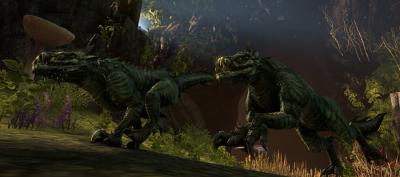
A draga is a big reptile about the size of a lion but of a more slender build. It’s tough hide is a deep emerald green but tends to be more brown in regions where forests are less dense and there is less vegetation and shadows. Arags are usually solitary but sometimes hunt in groups of three or four, which are able to kill almost anything they come across. (Class 4)

The droha is a big reptile found in all the tropical and temperate forests of the Old World, except on smaller islands. It’s about the size of a camel and has been domesticated in many areas as the main beast of burden. Drohas often live in herds of one to three dozen individuals. (Class 2)
 The garai is one of the largest predators found in the Old World. It’s a huge lizard bigger than the largest crocodiles and found throughout most of the southern regions. They are not terribly fast and rarely chase their prey far, but are surprisingly adept at hiding in the underbrush despite their enormous size. (Class 4) Continue reading “Old World Animals”
The garai is one of the largest predators found in the Old World. It’s a huge lizard bigger than the largest crocodiles and found throughout most of the southern regions. They are not terribly fast and rarely chase their prey far, but are surprisingly adept at hiding in the underbrush despite their enormous size. (Class 4) Continue reading “Old World Animals”
In the 5 years or so in which I have been working on a Sword & Sorcery setting I have learned a lot about worldbuilding and the genre, and recent revisions of my previous work have lead to great changes in the geography and wildlife of the world and a slight shift in focus and general approach. Learning more about the inclusion of mystery and the weird in fiction got me to rethink my approach to magic and the changes that resulted from that have made the Ancient Lands different enough to think of the world as a new setting. The Old World is not a snappy title, but it will have to do for now.
In the previous setting, magic worked very much like the Force from Star Wars and was mostly about directing the flow of energy within all things with your mind. It’s a good magic system, but not one that would allow for the contemplation of the mysteries of reality, and certainly not one that goes into the weird. This new magic system builds on those previous ideas but is designed to have much more room for the exploration of spiritual mysteries and Lovecraftian madness.
In the minds of ordinary people the world consists of the normal world in which they live their everyday lives, and the Spiritworld, which is a separate land where spirits live. But this is not at all the case. There is only a single world, but one that consists of multiple overlaping layers. The world that mortals think of as their own consists merely of the layers of touch, sight, sound, smell, and taste, but in reality there are many many more which they can not perceive with their senses. The spirits are not just watching them from another world, but are actually physically around them everywhere. They are merely existing in layers that are invisible to ordinary mortals and as such can not be touched, seen, or heared. But perhaps the greatest insight made by shamans and witches is that even mortals as themelves do not only exist in the five layers of their senses, but that their bodies and minds also extend into several other layers of which they are normally completely unaware. People who have been cursed are being affected in those other layers but are only aware of the effects on their bodies in the layers of touch and sight. All such things in which there is a visible effect in the layers of the five senses but the source is something that is happening in other invisible layers falls into the realm of magic.
As witches and shamans have discovered, mortals are not completely blind and deaf to the other layers of reality, but their senses of perception in those layers is usually extremely weak. Intuition and premonitions are the result of things perceived by these underdeveloped senses and common in all people to some degree. But trough years of meditation and the use of strong potions these senses can be greatly improved, allowing a person to see spirits and to see the presence of curses, spells, and sources of great magical power. And it is not only possible to passively perceive this Spiritworld, the parts of the mind that extend into those layers can also manipulate it. People who have acquired this rare skill are called shamans, witches, or sorcerers.
As everything that exists in the layers of touch, sight, sound, smell, and taste also extends into many other layers, the potential powers of magic are possibly infinite. But in reality the full forms of people, animals, plants, mountains extend only into some of the many layers that exist and not all of them can be learned to be perceived, regardless of training and commitment. And even the greatest sorcerers and most ancient witches have a perception that is very hazy and blurry and their powers of manipulation are clumsy and feeble. Spirits see much sharper in those layers and their abilities of manipulation are much finer and often much stronger. The most powerful magic is never the work of witches or sorcerers performed with their own power, but that of great powerful spirits who have made pacts with mortals who have pleaded for their aid.
As not only mortal people and animals exist in more than the five layers of the normal senses, but everything that exist, seemingly mundane substances can be of great use for the practice of magic. Salt has many important uses in everyday life, but in some layers its presence forms an almost impenetrable barrier for spirits even in small quantities. While a circle of salt is no hindrance at all for beings in the layer of touch or all those layers in which mortals exist, it is an extremely powerful substance in some of the layers inhabited by spirits. Iron is an ordinary metal to touch, and one of low quality compared to bronze, but being stabbed by a blade of either material hurts just the same way to mortals. To spirits it’s a completely different story and while bronze does very little to harm them, iron hurts them much more than simply cutting their shapes. Like salt, iron has effects on spirits much larger than the extent of its physical shape. Just as the heat from a large fire can be unbearable even considerable distances away from the flames.
While all these things are understood by all students of magic, the whole reality of the world is truly grasped only by few and missed even by many shamans and witches. Even with the enhanced senses to perceive additional layers of the world, mortals can never learn to perceive all of them. And as hard as it is for mortal minds, this is not just the case for a few layers but in fact for most. The true extend of reality is unimaginably vaster. Ordinary people see the world like the surface of an ocean while witches and shamans can see a hand’s length below it. The spirits of mountains, rivers, and forest live in the layers from the surface to perhaps an arm’s length below it, but below those there are many more miles of additional layers that even the spirits can’t fathom.
“Normal” magic takes place in the topmost layers that are close to the five layers of the senses and directly interact with them on regular bases. Creating fire, clouding the minds of others, or making a tree walk are all things that happen here. But the world of spirits extends further than this and those who attempt to see the gods of the land in their true form find them and their existance to be far stranger and more alien than what a typical village shaman ever experiences. And beyond that lie realms inhabited by beings that normally don’t interact with the five layers of the senses at all and they are the stuff of nightmare and pure madness. Those who are delving into the more remote realms are called sorcerers, and while their magical powers have the potential to accomplish things outside the powers of witches, shamans,and even spirits, the dangers that come with it are unimaginable. When you look too long into the abyss or too deep, it will also look back at you. And it might get curious and try to reach up to you.
When a mortal creature dies from natural causes, its existance ends in all the layers that it occupies simultaneously. When this happens it is gone and can not be returned by any means. However, there are ways in which only parts of a being are severed from the whole and the rest of it continues to remain in a state between life and full death. These are the undead. The most common kind of undead are ghouls. These are people whose bodies can still be touched, seen, and heard, but who have lost some of the parts that made up their mind and life energy. They are mad and feed on corpses and though their appearance changes they are still very much like living creatures. An even stranger creature is a wight, which has not only lost parts of its mortal self but also gained completely new abilities it did not have before. Sometimes the physical body is lost and the creature can no longer be touched but still be seen and continues to exist as a wraith. A shade is little more than that. A shadowy outline with barely any trace of a mind that somehow did not cease to exist with the rest of the former creature. As any aspect of a creature that has been destroyed can not be restored, undead can only be dealt with by destroying the rest of them. There is no way to restore them to the people they once were.
Why on earth does the phrase “As you know, …” exist in dialogues? Why would any person ever use it in conversation? It does occasionally come up in lectures and presentations, but then it means “as you should know, but I am saying anyway to spare you the embarrasment of asking the question, …” When you know the other person in a conversation knows these facts, it just makes no sense. Even as a writer, if you want a character to say something that is redundant because everyone in the conversation knows it, why would you draw attention to it by adding “as you know”. It might have gone by unnoticed that the statement was redundant for the characters if those words hadn’t been there.
Don’t draw attention to your flawed scene setup!
Jirel of Joiry by C.L. Moore is widely considered to be one of the great honored ancestors of the Sword & Sorcery genre by fans. There are a total of five tales of the character of which four have been published between 1934 and 1936, making them contemporaries of Robert Howard’s Conan tales and some of Clark Ashton Smith’s Hyperborea. Moore is primarily known for her science fiction work (and she wrote the first draft for The Empire Strikes Back) and build a very considerable reputation over the course of her career. I had not read anything by her before, but the name recognition alone had me go into this with pretty high expectations.
Jirel of Joiry is the ruler of a principality somewhere in “medieval” France. She’s a ruler and a warrior, which makes her the first published female hero of Sword & Sorcery (though Robert Howard wrote some which he didn’t get published), and you have to look pretty far and wide to find any other. However, I have to say I personally found her to be a very flat and one-dimensional character. She has no backstory whatsoever other than being the ruler of Joiry and her personalty consists of the two emotional states of anger and defiance. To me that barely qualifies her as a character.
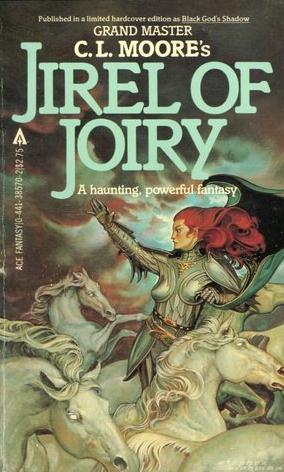 The stories themselves are a mixed bag. I quite like the first story Black God’s Kiss and the last story Hellsgarde, but was hugely disappointed by the other three. One thing that Moore does get very right is the creation of atmosphere and the imagining of strange and alien sights and landscapes. This is stuff that stands up pretty well when compared to the imagery evoked by Clark Ashton Smith, who was certainly a master at this. But this is not much consolation considering that the plots all completely suck.
The stories themselves are a mixed bag. I quite like the first story Black God’s Kiss and the last story Hellsgarde, but was hugely disappointed by the other three. One thing that Moore does get very right is the creation of atmosphere and the imagining of strange and alien sights and landscapes. This is stuff that stands up pretty well when compared to the imagery evoked by Clark Ashton Smith, who was certainly a master at this. But this is not much consolation considering that the plots all completely suck.
Black God’s Kiss stands well above the others in this regard, as it has things happening and progressing. Jirel has been defeated by an enemy general and imprisoned in her own dungeon, after having suffered the terrible insult of being forced to kiss him. This can not stand and so she calls on the priest of her castle to help her getting her revenge by leading her to a secret passage that leads into a strange nightmare realm, where she might find some source of dark magic to slay her enemy. The journey down the strange passage and through the other world is quite well done and I greatly enjoyed reading it. The story also ends in a quite surprising way that I found to be pretty brilliant. I’ve seen comments about people considering it misogynistic, but my impression was that there are dark forces at work and not that Jirel succumbs to some “female weakness”. I very much recommend reading this one and seeing it for yourself.
The same can’t be said for the other stories. Black God’s Shadow is pretty much part two of the previous one, but reads more like Moore was recycling all the strange sights she had cut from Black God’s Kiss to keep the story from getting too long and losing its pacing. But nothing actually happens. In Jirel Meets Magic and The Dark Land, she finds herself in different strange realms of magic that have their own weird sights, but again nothing at all actually happens. These three stories consist of nothing but descriptions of strange things seen in strange lands, but without a plot it’s hard to care about any of them. Hellsgarde is better again in that it doesn’t go to yet another strange realm and that it has a plot. Jirel has to travel to an old haunted castle in a swamp to ransom her knights out of captivity but finds it to be not entirely abandoned. It’s not a great plot, but it’s a plot, and it has a surprising reveal at the end, that unfortunately fails to actually change anything that happened before.
Another big problem I have with the stories beside the lack of character and plot, is that Moore did a pretty poor job at making things feel threatening. The stories are mostly nothing but descriptions of things, but she still managed to completely fail at following “show, don’t tell”. Pages over pages of descriptions of how things look like and how Jirel feels about seeing them, but the things she describes don’t appear to be threatening at all. The moonlight looks poisonous, the shadows look evil, and the river looks terrifying. And we have nothing to go with than taking her word for it. There’s no mention of how the moon, the shadows, or the river look different from ordinary examples and so there’s no reason why we should feel anything similar to what she tells us Jirel is feeling. In Hellsgarde we even get a man of ordinary stature with “the face of a hunchback” and “the voice of a cripple”. At the third mention of the hunchback with the straight back, I couldn’t help myself thinking: “You keep using this word. I don’t think it means what you think it means.”
So in my final assesment I have to say: Nay! While I think Black God’s Kiss is a good story and entertaining read, Jirel of Joiry is not a good or interesting collection at all. In fact, I think it’s really pretty bad. Moore is one of the few women who wrote Sword & Sorcery and Jirel one of the very few female protagonists of the genre, and I suspect this might be the reason of the character’s limited fame. We want more female writers and more female protagonists, and being able to find one back in the 30s we latch onto it. However, more recently we got The Copper Promise by Jen Williams which also has a female protagonist. I am currently reading it and while I am not much of a fan yet, Williams easily pushes Moore down to second place for women in Sword & Sorcery. Let’s just hope we’re going to see more competition in the coming years.